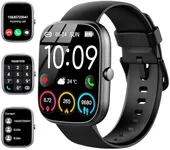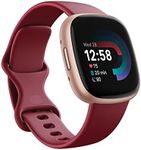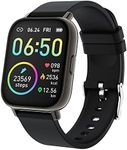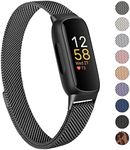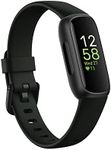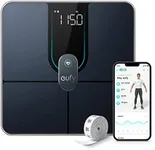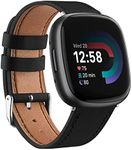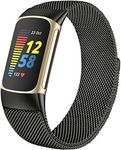Buying Guide for the Best Fitbit Model
Choosing the right Fitbit model involves understanding your personal fitness goals, lifestyle, and the features that will best support your health journey. Fitbits are designed to track various health metrics, but different models offer different features. It's important to consider what you want to monitor, how you plan to use the device, and how it fits into your daily routine. By understanding the key specifications, you can make an informed decision that aligns with your needs.Activity TrackingActivity tracking is a core feature of Fitbit devices, allowing you to monitor steps, distance, calories burned, and active minutes. This spec is important because it helps you understand your daily activity levels and encourages you to meet your fitness goals. Basic models track steps and calories, while more advanced models offer additional metrics like floors climbed and active zone minutes. If you're just starting out, a basic tracker might suffice, but if you're training for a specific event or want more detailed insights, consider a model with advanced tracking capabilities.
Heart Rate MonitoringHeart rate monitoring is a feature that tracks your heart rate throughout the day and during workouts. This is important for understanding your cardiovascular health and optimizing your exercise routines. Some models offer basic heart rate tracking, while others provide continuous monitoring and heart rate variability. If you're interested in tracking your heart health or optimizing workouts, choose a model with continuous heart rate monitoring. For general fitness tracking, a basic heart rate feature may be sufficient.
GPSGPS functionality allows you to track your pace and distance during outdoor activities like running or cycling without needing to carry your phone. This is important for those who want accurate tracking of their outdoor workouts. Some models have built-in GPS, while others connect to your phone's GPS. If you frequently exercise outdoors and want precise tracking, opt for a model with built-in GPS. If you usually have your phone with you, a connected GPS might be adequate.
Sleep TrackingSleep tracking monitors your sleep patterns, providing insights into your sleep quality and duration. This is important for understanding how well you're resting and identifying areas for improvement. Basic models track sleep duration, while advanced models offer detailed sleep stages and insights. If improving sleep is a priority, consider a model with comprehensive sleep tracking. For general awareness, a basic sleep tracker may be enough.
Battery LifeBattery life indicates how long the device can operate before needing a recharge. This is important for convenience and ensuring the device is always ready to use. Basic models may offer longer battery life due to fewer features, while advanced models with more features may require more frequent charging. If you prefer not to charge your device often, look for models with longer battery life. If you're okay with regular charging, you can opt for a feature-rich model.
Water ResistanceWater resistance determines whether the device can withstand exposure to water, such as during swimming or showering. This is important for those who want to track water-based activities or wear the device in all conditions. Some models are splash-proof, while others are swim-proof. If you plan to swim or wear your Fitbit in the shower, choose a model with higher water resistance. For general use, a splash-proof model may be sufficient.
Smart FeaturesSmart features include notifications, music control, and contactless payments, enhancing the device's functionality beyond fitness tracking. This is important for those who want a more integrated experience with their smartphone. Basic models may offer call and text notifications, while advanced models include music storage and payment options. If you want a device that doubles as a smartwatch, consider a model with extensive smart features. For pure fitness tracking, basic smart features might be enough.
